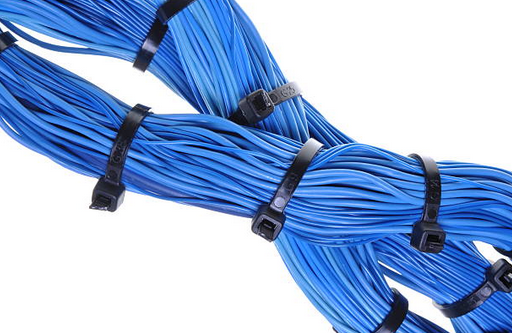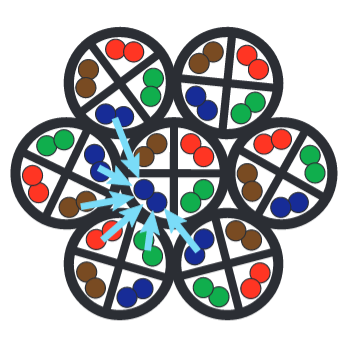Beauty Isn’t Skin Deep
December 27, 2018 / General, Installation and testing, Industrial Networks, Best Practices
While neatly combed bundles of cables might look really nice in exposed overhead cable trays and in racks and cabinets, this aesthetically pleasing deployment isn’t always a thing of beauty when it comes to performance.
Sometimes this can be hard to explain to your customers who seem to care more about how the cable looks versus how well their data transmits.

Some Things Are Better Kept Natural
Whenever Category 6A UTP cables capable of supporting 10 Gig applications are combed or tightly bundled, you risk increased alien crosstalk (AXT) that can wreak havoc on high speed transmission. Why?
Alien crosstalk is caused by interference on a cable pair from a pair in an adjacent cable, and it became an issue with Category 6A cabling characterized up to 500 MHz simply due to the higher level of frequency and noise. So it’s easy to understand that anytime cables are evenly combed or tightly bundled together so that they lay adjacent to one another, alien crosstalk will increase—precisely why worst-case alien crosstalk testing involves six around one.
By increasing the level of noise within the channel, alien crosstalk decreases signal-to-noise ratio and degrades the bandwidth capabilities of the cable, potentially preventing the cable from supporting 10 Gig transmission. This is precisely why standards bodies like TIA and BICSI, as well as most cable manufacturers, recommend letting cables have a “natural lay” in pathways and conduit. But even with this recommendation, there are still some customers that require cables to be combined in neat bundles. There are even tools available for quickly and efficiently straightening, combing and organizing cables into multiple bundles with ease.
Tightly fastening of cable bundles every 8 to 12 inches via nylon tie-wraps is also not recommended. Nylon tie-wraps can place too much pressure that actually changes the physical geometry of the cable, deforming or modifying the twisted pairs and further degrading performance. If fastening bundles of cables, for example within cable managers at the rack, loose Velcro straps are the recommended method. And besides, Velcro straps can be more easily removed and replaced during moves, adds and changes.
From a cable testing standpoint, combed and tightly bundled cables might exhibit Power Sum Alien Near-End Crosstalk (PSANEXT) and Power sum attenuation to alien crosstalk ratio far-end (PSASCRF) levels that either fail standards performance specifications or leave you with very little headroom, while too-tight nylon tie-wraps can exhibit a wide range of performance issues – and there is nothing beautiful about that at all.
It’s Not Just the Aliens You Need to Worry About
While increased alien crosstalk caused by tightly bundled cables is a concern for Category 6A cables in 10 Gig applications, this isn’t the only issue of concern. If you’re installing cables that will deliver higher power Power over Ethernet (PoE) like 60W Type 3 PoE or higher, bundling cables can also cause heat rise – and the larger the bundle, the more the cables will heat up. And it’s even more of a concern with lower category cables like Category 5e and 6.

While other factors can also increase temperature within a cable like the overall cable construction and surrounding ambient temperature, cables in the middle of the bundle transmitting 60W PoE or higher cannot adequately dissipate heat. And when a cable’s temperature rises, so does insertion loss---the loss of signal power that can prevent proper data transmission.
Since insertion loss is directly related to the length of a link (which is why there are specific distance limitations called out in industry standards), TIA standards recommend reducing the link length (otherwise known as derating) when installing cables at elevated temperatures. But even if the ambient temperature is not high, cables in the middle of large bundles carrying higher levels of PoE may heat up to the point of degrading performance. So once again, it is recommended to loosely group cables rather than bundling.
So what is the lesson here? While tightly bundled cables might be a thing of beauty to some, beauty is only in the eye of the beholder. The real beauty is when your cables perform in way that results in reliable data transmission. Now you just need to educate and convince your customers of the same.






